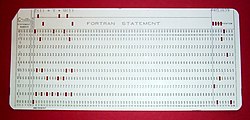
A computer operator is a role in IT which oversees the running of computer systems, ensuring that the machines, and computers are running properly. [1] The job of a computer operator as defined by the United States Bureau of Labor Statistics is to "monitor and control ... and respond to ... enter commands ... set controls on computer and peripheral devices. This Excludes Data Entry." [2]









